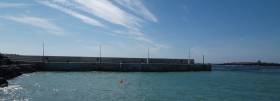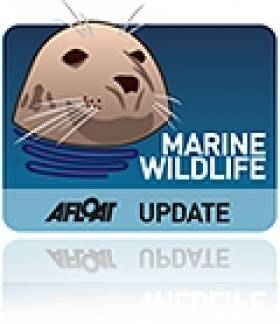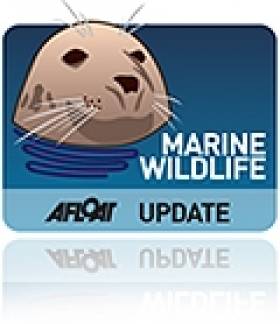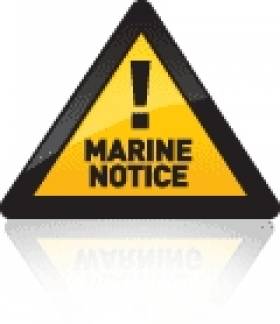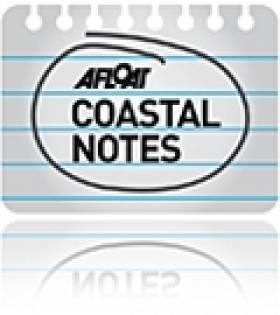Displaying items by tag: Doolin
Consultants Appointed To Design Doolin Pier Facilities
Clare County Council has today (Tuesday, 12 April 2016) announced the appointment of consultants for the design of proposed shoreline facilities at Doolin Pier, including a new visitor facility.
A new €6m pier was officially opened in June 2015 in the North Clare coastal village where currently an estimated 70,000 to 90,000 passengers are carried to and from the Aran Islands by Doolin-based ferry operators and this is expanding annually with the introduction of the Wild Atlantic Way through this part of County Clare.
The Council says the proposed visitor facility will replace existing temporary structures and will be part of a masterplan proposal relating to the development of the Doolin Pier area including the pier area in general, vehicle routes to and from Doolin village, and parking and traffic management.
Among the functions and operations being considered within the overall plan is the sale of tickets by a number of Ferry Operators, the serving of food, and the provision of toilet facilities for patrons and staff, public waiting/viewing area, luggage holding area, tourism information, car/bike parking, waste management, harbour master office, and health and safety requirements.
The architect-led design team comprises Bucholz McEvoy Architects (Architects), Punch Consulting Engineers (Civil Structural Engineers), IN2 Engineering (M&E Engineers), Aecom (Quantity Surveyor), Aegis Safety Ltd (PSDP safety) and HRA Planning (Planning).
“The key to the success of this project is the design of a sustainable product that is delivered in an environmentally, socially and economically balanced way to ensure longevity and success of the pier and maximise the potential of the new pier infrastructure already invested,” said Tom Coughlan, Chief Executive.
The consultation process, expected to commence during the summer months, will be taken into consideration during the design development to assist in maximising the potential of the site and also to facilitate an opportunity to obtain valuable local knowledge and insight from the primary users.
"The commencement of the design stage of this project is very welcome and it begins the process of delivering a visitor facility at Doolin which has been long sought after by pier users," said Cllr. James Breen, Cathaoirleach of Clare County Council.
"Doolin Pier is one of the most important pieces of infrastructure in North Clare and the primary tourism nautical link with the islands from County Clare. It is important therefore, that it is complemented with the delivery of important ancillary services and facilities as those proposed," said Cllr. Breen.
The appointment of an architect-led design team to develop a full design brief and the Council's decision to hold a public consultation process also has been welcomed by Cllr. Christy Curtin, Chair of the West Clare Municipal District.
"The proposed facilities will greatly improve the visitor experience in Doolin and they will help to further drive ferry activity between North Clare and the Aran Islands and the Cliffs of Moher during the tourist season, as well as accommodate other activities – both leisure-based and otherwise," said Cllr. Curtin.
More on visiting Doolin can be found here
#CoastalNotes - Doolin expects to double the number of visitors on its ferry route to the Aran Islands after the opening of its new €6m pier last week.
As the Irish Examiner reports, it's envisaged up to 200,000 people will use the Co Clare village as a gateway to the Galway Bay island chain via the new pier which does away with the former practice of 'trans-shipping', or ferrying passengers by currach from the older, smaller pier to the ferry offshore at low tide.
Among the locals hailing the new pier's potential for the locality is ferry operator Eugene Garrihy, who says it represents "the best money spent here in decades" and believes the investment "will double within the next three to five years" as the previously announced master plan is carried out.
Garrihy adds that the ferry route was "completely hamstrung in the past by tidal issues, which prevented us [ferry operators] from scheduling sailings for a peak period of the day, but now the pier is redeveloped the shackles are definitely off for us.”
He also said that despite opposition from surfers over the pier's feared impact on the Crab Island wave, they have benefitted from the project in the form of a shower block and new launch area.
The Irish Examiner has more on the story HERE.
New Doolin Pier Officially Opened In County Clare
#doolinpier – The new €6m Pier at Doolin, Co. Clare, has been officially opened today by Brendan Howlin, T.D., Minister for Public Expenditure & Public Reform.
The new 65-metre pier, the development of which was led by Clare County Council, will serve as a primary access point to and from the Aran Islands for ferry companies operating out of Doolin.
"This important infrastructure project has been long sought after by ferry operators, fishermen and tourists who use the pier. The new pier development will boost visitor numbers in Clare considering access to the Aran Islands from the County has now been greatly enhanced with the completion of this project," said Cllr. John Crowe, Cathaoirleach of Clare County Council.
"I want to congratulate the staff of Clare County Council and the consulting engineers on the project, Punch Consultant Engineers and Malachy Walsh & Partners, who have guided the pier project through the various stages of planning and construction. I also want to acknowledge L & M Keating Limited of Kilmihil who completed the construction of the new pier on schedule and within budget," he added.
Tom Coughlan, Chief Executive, Clare County Council commented: "From the outset, the Council has believed this project would have significant, positive economic and social consequences for the people of North Clare and the wider region, including the Doolin Coast Guard, fishermen, tourists and the general public in terms of leisure and amenity use. This belief has been strengthened over the years as a result of the support shown by the local community, the Elected Members and of course, the Government."
Mr. Coughlan said the completion of the new pier complements plans to develop a Visitor Services facility at the location.
"The next step in the development of Doolin Pier will be the planning and construction of ferry terminal visitor facilities, incorporating improvements to parking and ancillary services. That project is currently being progressed and I look forward to further announcements in the near future," added Mr. Coughlan.
Minister Opens New Coast Guard Unit in Doolin
#coastguard – Minister for Transport, Tourism and Sport, Paschal Donohoe T.D has opened the newly-built Coast Guard Station in Doolin, Co Clare. As one of the busiest Coast Guard Units in the country, this new facility provides the local Volunteer Coast Guard team with top class facilities including an operations and training room.
The project has been in the pipeline for many years and provides one of the busiest Coast Guard Units in the country with an operations and training room, changing facilities, wet room, store room and a large garage within which to store boats, road transport and cliff rescue equipment.
The purpose built facility is situated close to Doolin pier on the south-western tip of the Burren Uplands, enjoys scenic views of the nearby Aran Islands and approaches to the adjacent Cliffs of Moher. Architecturally the building takes the form of a series of abstract blocks that reflect the surrounding geology, reducing its apparent size in the landscape and, in effect, becoming part of the landscape.
Commenting today Minister Donohoe said: 'Both Clare County Council and the OPW deserve great credit for developing a building that is both functional and sensitive to the local landscape. The design in itself will be an added visitor attraction to the area as its unique design enables it to sit comfortably with other similarly scaled natural rock structures present in the area'.
"I am particularly delighted to have the opportunity to thank the volunteer members of the Doolin unit, and indeed all Coast Guard volunteers for the service they so willingly provide to our coastal communities. Coast Guard volunteers shoulder much responsibility and the services that they provide, including boat rescue, cliff rescue and shoreline searching are an integral part of our world class Maritime Search and Rescue organisation.
"This Doolin opening follows on the completion of similar projects in Killybegs in 2014, Crosshaven in 2013 and Goleen in 2012. This year I expect work on the construction of a new station in Greystones to commence. Plans for construction of a station in Westport are also at a very advanced stage."
The Volunteer Officer-in-Charge of the Doolin unit, Mattie Shannon, whose two late uncles were members of the forerunner of the Coast Guard, the CLSS (Coast Life Saving Service) established in 1937, described the opening as a proud day for the team and the Doolin community, saying: 'It gives me great pleasure to welcome all of our Coast Guard friends to Doolin on what is a proud and historic day. I want to extend a special welcome to former members of the Unit and I know they will feel as proud as the current team does. We have pursued this goal for many years and we now have a facility that will ensure that the Doolin Volunteer Coast Guard Unit is equipped to support the coastal community and surrounding areas well into the future'.
Irish Coast Guard Director, Chris Reynolds, said: 'The Doolin Unit has a long and proud tradition that dates back to 1937 when a Coastal Life Saving Service was established locally. The professionalism and commitment that was displayed in those early days continues to be the hallmark of the unit. In recent years it has been one of the busiest teams in the country providing cliff rescue services, boat rescue and shoreline search services, coupled with support for Coast Guard helicopters as well as supporting and assisting the other statutory and voluntary services'.
Weather Bomb Causes 'Reverse Waterfall' At Doolin
#WildAtlanticWay - Check out this video shot by Eoin O'Hagan for Clare Virtually that shows the intense results of the first winter storm of the year at Doolin in Co Clare.
Indeed, the winds from the so-called 'weather bomb' were so strong at that stretch of the Wild Atlantic Way that they blew the sea spray up and over the cliffs in a reverse waterfall!
Woman Tells Of 'Pure Terror' In Doolin Dolphin Incident Last Summer
#MarineWildlife - The swimmer who suffered serious injuries when she was attacked by Doolin's formerly resident dolphin has spoken of the "pure terror" of the incident last summer.
As previously reported on Afloat.ie, the woman was hospitalised after being stuck by the snout of Dusty the dolphin, whose behaviour had grown increasingly hostile towards swimmers in the Co Clare harbour over the summer.
Valerie Ryan spoke out some weeks later over the incident, calling for a total swimming ban in the area as she outlined the extent of her injuries, which included eight spinal fractures, two broken ribs and lung damage.
More recently, she recounted her experience for the Guardian, noting how Dusty "went ballistic" after she entered the water to join another swimmer ("I found out afterwards that she's very territorial when she us with somebody") and rammed Ryan from behind before she could climb out.
"All these people on the pier were staring down at me open-mouthed," she recalls. "Dusty was still in the water beside me, her tail flapping crazily. That was more frightening than anything: I thought, if she hits me with her tail, I could go under; I’m gone."
Yet despite the shock of that day, Ryan says she doesn't have "any anger towards Dusty. I respect her. But I was in her territory and she’s a wild, unpredictable animal. People need to know that."
The Guardian has much more on the story HERE.
Doolin Coast Guard Moves Into New Station
#Coastguard - More than a year after getting final approval from then Minister for Transport Leo Varadkar, the new coastguard station at Doolin has opened at last, as the Irish Examiner reports.
The 25 volunteer members of the Irish Coast Guard's North Clare unit began their move into the state-of-the-art €1.9m facility on Monday 18 August, after previously operating out of a 150-year-old stone shed that suffered serious damage in this year's severe winter storms.
And its location – much closer to the village's peer, which is currently undergoing long-awaited upgrade works – should mean an end to the delays caused by parking issues that have plagued the rescue boat service in recent years.
The Irish Examiner has much more on the story HERE.
Doolin's Dolphin Safe From Harbour Blasting Works Says IWDG
#MarineWildlife - The Irish Whale and Dolphin Group (IWDG) has allayed concerns over the fate of Doolin's resident dolphin Dusty as work begins on the Co Clare town's new pier.
Despite the distress caused by her attacks on swimmers last year, Dusty has many loyal supporters - one of whom, Jan Ploeg, shared with the Sunday Independent concerns about the effect of underwater sound waves produced by blasting works in Doolin harbour on the sensitive cetacean.
However, the IWDG's Dr Simon Berrow says there's little to worry about, as Dusty is currently living and feeding at Inisheer, some 8km from the blast site, "so there will be no impact on her".
The IWDG is presently monitoring a 500m zone around the blasting works using passive acoustic monitoring through a hydrophone to ensure no marine mammals are affected by the potentially damaging sound waves.
Marine Notice: Doolin Pier Development
#MarineNotice - The latest Marine Notice from the Department of Transport, Tourism and Sport (DTTAS) advises that works are being advanced by L&M Keating Ltd on the new harbour development at Doolin, Co Clare.
The location of the works – comprising a new pier, revetment, bed rock dredging, access road and associated works – is at Latitude 53° 00’.54 N and Longitude 009° 24’.23 W.
Construction commenced last month and the works are expected to take in the region of 18 months to complete.
Drilling and blasting works were scheduled to be carried out this week, and for health and safety reasons an Exclusion Zone has been set up and is being and monitored.
Mariners are requested to proceed slowly and with caution in the vicinity and to give the works a wide berth.
All vessels in this area should proceed with extreme caution, reduce speed to a minimum and keep a close look out for obstructions in the vicinity of the works.
The site working area will be marked with blue buoys. Wave-wash from vessels should be avoided. A diagram of the works area is included in Marine Notice No 33 of 2014, a PDF of which is available to read or download HERE.
#DoolinPier – A new Atlantic seaboard pier sought by ferry operators and fishermen at Doolin in County Clare is expected to be completed by mid-2015 following the signing of a major marine infrastructural project today.
Brendan Howlin, T.D., Minister for Public Expenditure and Reform was in Doolin this afternoon to visit the location of the proposed €6m pier project for the County Clare coastal village.
Minister Howlin's visit coincided with the signing by Clare County Council of a contract with L&M Keating, the successful tenderer for the construction of the new pier. Construction work will begin in the coming days and is expected to be completed by mid-2015.
Mayor of Clare Cllr. Joe Arkins commented: "This project has been long sought after by ferry operators, fishermen and tourists who use the pier. The new pier development will boost visitor numbers in Clare considering access to the Aran Islands from the County will be greatly enhanced once the project is completed."
He added: "The completed pier will be used mainly to facilitate ferry activity between North Clare and the Aran Islands and the Cliffs of Moher during the tourist season while the existing pier will be available to accommodate other activities – both leisure based and otherwise. The new pier will ensure that Doolin is accessible in all tidal conditions, which will be of particular benefit to Doolin Search and Rescue as well as the ferry operators."
"I want to congratulate Clare County Council and its consultants who have worked closely with interested parties in ensuring that the completed pier brings a wide range of benefits to its users and the wider community," said Mayor Arkins.
Tom Coughlan, Clare County Manager added: "I am delighted that construction of this vitally important piece of infrastructure will commence shortly following years of open debate and extensive consultation with users of the pier, as well as the local community."
He continued: "The Local Authority has invested considerable time and resources into ensuring that the Doolin Pier project is one that benefits all users of the existing pier. Once completed, this project will have significant, positive economic and social consequences for the people of North Clare and the wider region. For example, the construction phase of the project will create jobs as will the increase in business that will arise as a result of the Pier's completion."
Tom Tiernan, Senior Engineer and Doolin Pier Project Manager stated: "I wish to pay tribute to the Council Consultants, led initially by Malachy Walsh and Partners, who guided the project from its inception through the various stages of planning, including the preparation of the Environmental Impact Statement (EIS) which facilitated An Bord Pleanala's decision in 2013 to give the go ahead for the construction of a new pier. I also want to thank Punch Consulting, who are leading the project through its tender and construction stages."
"The next stage of the Pier project is construction which will get underway almost immediately. L & M Keating Ltd, with whom Clare County Council signed a contract with today, is a well established Marine Works contractor and we look forward to working with the company. We anticipate that the project will be completed around mid 2015," concluded Mr. Tiernan.



























